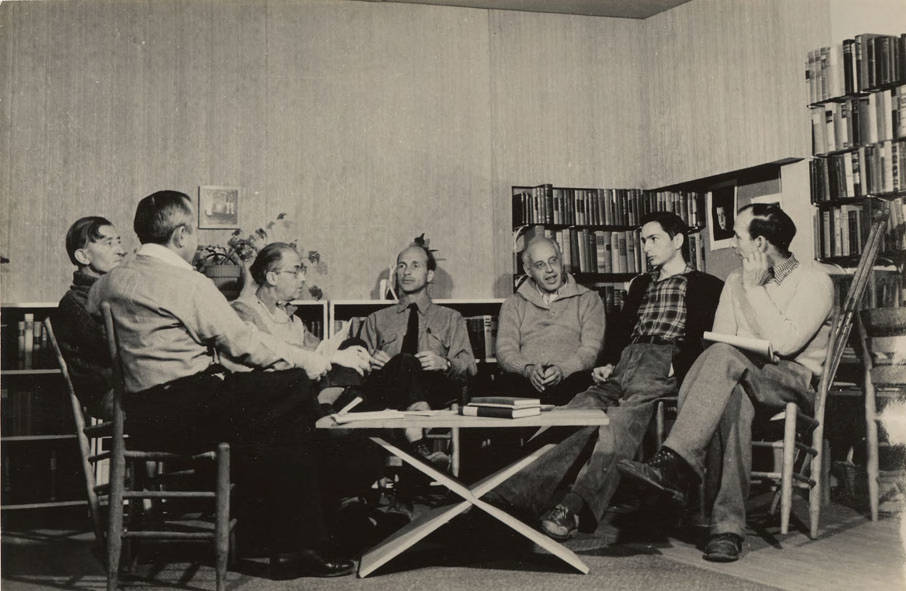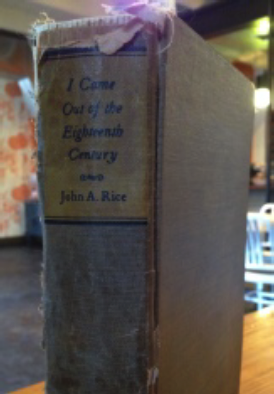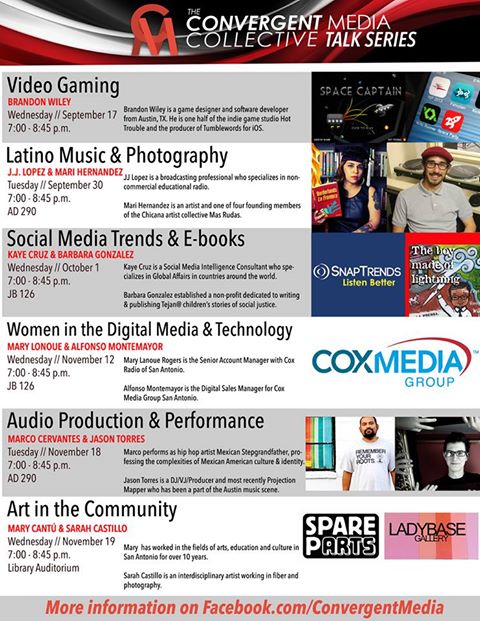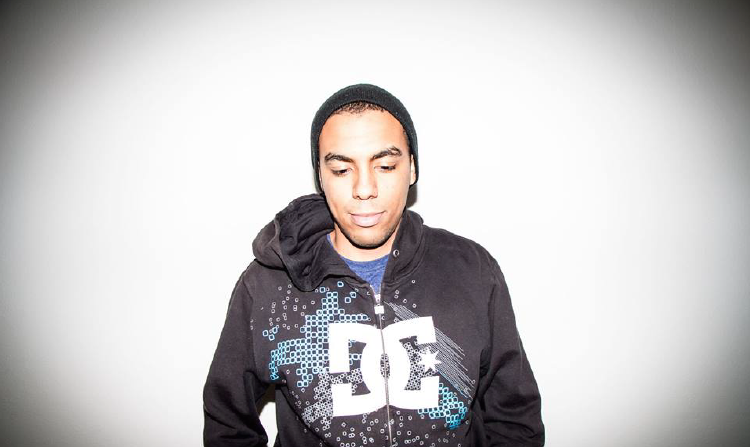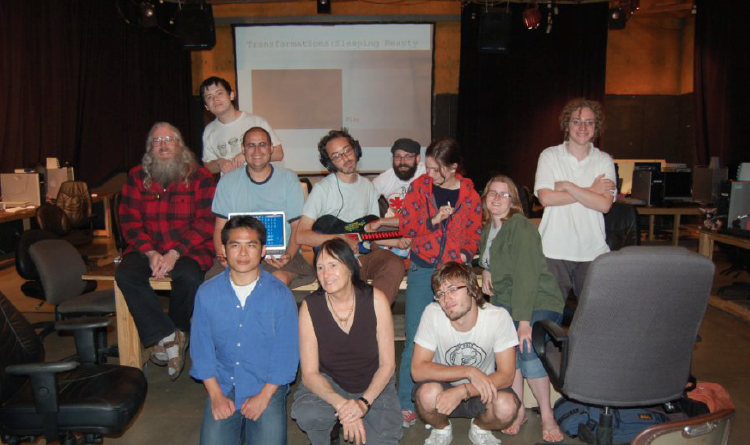The BMC Effect is Black Mountain College’s influence on contemporary alternative pedagogical educational experiments. Founded in 1933 in the small town of Black Mountain, North Carolina, Black Mountain College focused much of its efforts on educating the wholeness of its students utilizing a model of student-teacher open dialogue. The College also sought to incorporate artistic growth into its curriculum, believing that this would help students in their ideation process and encourage creativity. Although it closed its doors in 1957, the College’s presence can still be felt throughout the many experimental colleges and programs, which followed its radical teaching model. This website explores the philosophy of Black Mountain College and traces its influences to these various programs, specifically focusing on the former ACTLAB at the University of Texas at Austin, the Media Lab at the Massachusetts Institute of Technology and the former Convergent Media Program at the University of the Incarnate Word.
DEFINING BMC
Robert Wunsch teaching Drama students on the Blue Ridge Campus of Black Mountain College.
Black Mountain College existed as a unique idea in a time of educational monotony and unwarranted progressive experiments. Although only operating from 1933-1957, it profoundly impacted American educational values and stood as a testament to the importance of individual freedoms in the classroom (and beyond) as well as the result of a truly democratic educational attempt. Inspiring the creations of several well-known inventors, artists, and intellectual theorists, the college combined a multitude of educational ideas ranging from that of John Dewey to Buckminster Fuller and Josef Albers. Everyone who came to the college brought with them a unique perspective on their given field as well as their perceptions of how a community should operate. These combined values and experiences created a natural cultivation of new thoughts, an unbridled spirit of experimentation and a willingness to look beyond set perspectives and embrace a fledgling community that didn’t yet know what would become of itself. This portion of The BMC Effect aims to examine the various concepts which shaped the experience of Black Mountain and the effects which emanated from its aftermath.
John Andrew Rice, The Founder
John Andrew Rice
The founder of Black Mountain College, John Andrew Rice, began his educational career at the University of Nebraska where he became known for his unique teaching methods aimed at motivating his students and creating a uniquely dialogical environment where learning could take place. His next professorial stint found him at the New Jersey College for Women, where he resigned after a dispute with his dean and an overall unsatisfied feeling about the College’s educational principles.
After his controversial exit from NJCU, he found himself at Rollins College where he garnered a following among some students who felt inspired by his intense personality and knack for connecting with his pupils. After a fallout with the president of Rollins College over Rice’s often divisive personality and unorthodox teaching methods, Rice, along with another Rollins defector, Ted Dreier, left to found a new experimental college in the small town of Black Mountain, North Carolina.
Scheduled to open on September 25 , Rice developed a unique philosophy for the college which would eventually become known as one of the most prominent educational experiments in North America. Utilizing Rice’s unique philopsophy, the college, comprised of some 20 students and eight instructors at its inception, operated with the ideals of democratic governance and student-led discussion at its core.
In Rice’s autobiographical book “I Came Out of the Eighteenth Century,” he stated that Black Mountain was to be an “education in democracy.” He believed that the traditional model of education which permeated most American colleges existed as a rather European ideal and parted from the basis of educating a free and open-minded student populace.
At Rice’s Black Mountain, students were forced to think outside the realm of a traditional college education. Unlike contemporary liberal arts colleges of the time, Rice wanted to include the study of art as a focal point for all areas of study. In “I Came Out of the Eighteenth Century,” he stated that, “The center of the curriculum, we said, would be art. The democratic man, we said, must be an artist.”
John Dewey's Influence
John Dewey
An ardent and sometimes combative individual, Rice prized himself on the legitimacy of this own educational beliefs, many of which stemmed from the ideas of the American philosopher and intellectual John Dewey, whose ideas profoundly impacted Rice’s philosophy and the founding of Black Mountain. Dewey believed that the current educational system sprung up as a result of a Feudal time period when universities were intended to train the elite ruling class of youths and therefore found itself to be out of date with current standards of education. This led to Dewey’s total re-examination of learning and the garnering of intellectual stimuli.
In an article in a 1960 edition of the International Socialist Review, W.F. Warde stated that, “Dewey sought to supply that unifying pattern by applying the principles and practices of democracy, as he interpreted them, consistently throughout the educational system.” An ardent believer in project-based learning, Dewey held the belief that, “Participation in meaningful projects, learning by doing, encouraging problems and solving them, not only facilitates the acquisition and retention of knowledge but fosters the right character traits: unselfishness, helpfulness, critical intelligence, individual initiative, etc. Learning is more than assimilating; it is the development of habits which enable the growing person to deal."
When identifying specific areas within the traditional classroom space that needed expanding and the introduction of the democratic element, Dewey came to realize the importance of the educational environment in its own right. He stated in his work, Experience and Education that, “The Limitation that was put upon outward action by the fixed arrangements of the typical traditional schoolroom, with its fixed rows of desks and its military regimen of pupils who were permitted to move only at certain fixed signals, put a great restriction upon intellectual and moral freedom.”
In his examination of the traditional classroom experience, he noticed that behind the appearance of uniformity and regimentation existed an underbelly of free-thought perpetuated by students’ imaginations and ideas, which if brought forth, would result in punishment or dismissal by faculty. He instead held the belief that, “Mechanical uniformity of studies and methods creates a kind of uniform immobility and this reacts to perpetuate uniformity of studies and of recitations, while behind this enforced uniformity individual tendencies operate in irregular and more or less forbidden ways.”
These beliefs were crucial to Rice’s formation of the BMC philosophy which operated from a standpoint of total freedom. Students were granted the right to come and go from classes when they pleased and to engage only in classes in which they found a particular interest, with the exception of art-based classes which, as stated previously, Rice believed were essential to the understanding of democratic learning.
John Dewey was no stranger to Black Mountain College, and even made several trips to the campus during the 1934-1935 college year. Not considered an imposing figure by any means, Dewey felt content to observe the happenings and operations of the fledgling community and appeared delighted by his observations. After his pair of visits, Dewey accepted an offer to become a member of the school’s Advisory Board in order to continue to observe this institution which operated with his theories as its basis. Rice, a long time admirer of Dewey’s ideas, described him as the only man who was “completely fit and fitted to live in a democracy" (Dubcerman 94).
Life at BMC
BMC Students Conversing on the porch of the main Blue Ridge Assembly Building.
Living to Learn
Student life at Black Mountain College existed as an integral part of the educational experience. Rather than segregate the learning experience from that of the day-to-day lives of the students, John Andrew Rice and his colleagues emphasized that both should be intertwined. They believed that only through the creation of a community free from the barriers which traditionally divide students and teachers could true learning be accomplished. With the requirement that all faculty and staff live on campus, students and faculty played a large part in each others’ lives, with neither emphasizing superiority or attempting to live apart from the other. Students and their professors often formed strong bonds which transcended the four walls of the classroom (or the available learning area, as classroom space was scarce in the early days of BMC) and stretched into all aspects of the resident’s lives.
Dining and Conversing
John Andrew Rice conversing with students on the BMC campus.
In Martin Duberman’s book, Black Mountain: An Exploration in Community, he notes that, “A favorite slogan at Black Mountain was that “as much real education took place over the coffee cups as in the classrooms.” He later explained that, “All aspects of community life were thought to have a bearing on an individual’s education-that is, his growth, his becoming aware of who he was and wanted to be. The usual distinctions between curricular and extracurricular activities, between work done in a classroom and work done outside it, were broken down.”
The Black Mountain College dining hall evolved into a favorite meeting place for both faculty and students with each party enjoying the company of the other during mealtime. Absent was the notion of having a separate room for faculty and staff, as each person who entered the campus couldn’t escape sharing a communal experience with the other members. The College definitely wasn’t designed as an incubator for shyness, and even the most low-key of students became immersed in the inclusive community life which permeated throughout the campus.
John Andrew Rice possessed a certain fondness for helping his students learn outside the classroom. He almost never held classes in a particular room, and instead preferred to meet with his students outside or elsewhere on the college grounds. Rice’s preference for uniquely southern cooking shone forth in the meal servings provided at the College, which often included greasy fried food and vegetables. Another prominent food item at BMC was coffee which, according to Michael Rumaker’s account of his time at BMC in the early 50’s, was often served in “a big, open cook pot. Due to many students’ preference to keep working on their projects through the night or to engage in a conversation longer than daylight would allow, this “pan coffee” as it was referred to by BMC students became a necessity on campus and a local culinary staple which found itself woven in the complex tapestry that existed at Black Mountain. Rumaker even outlined how to make this beverage in his book as well: “When water boils, toss in coffee, lots of it, let boil a few minutes, then sprinkle cold water on top and bang the pot down hard to have grounds settle to the bottom, let sit a minute or two, then pour.”
Residences at Black Mountain
Don Page's Student Study at BMC
The residences at Black Mountain were nothing special and weren’t necessarily large or extravagant by any stretch of the imagination. Most consisted of simple bedding, drawers, and a chair or two, and having been constructed by students during their “work periods,” often had their fair share of construction issues. Michael Rumaker details his first room at BMC, which was located close to the college’s farm in a small cottage referred to as “Roadside,” because of its close proximity to the campus’ main road: “The rooms were pine-walled enclosures, unpainted and furnished austerely with only the bare necessities: beds, whose mattresses had a soury smell, and old chest of drawers, a cane-bottomed, straight-backed chair or two.”
The professors and faculty/staff members lived in slightly roomier apartments, many of which were located in the main Blue Ridge Assembly building. Many brought their families with them and so, in later years, the College sought out appropriate lodging solutions capable of housing spouses and children.
Josef and Anni Albers' living room at BMC.
In the beginning, a major cause of concern and unrest at Black Mountain centered around the rules and regulations for students living in the residence halls. Despite its progressive leanings, the college still dealt with the problem of appropriately housing college-aged males and females in the stringent morality structure of small town America in the mid 20th century. Despite accounts from students stating that sexual intercourse wasn’t a matter of concern or even worthy of discussion at the College, the outcry from the conservative community of Black Mountain (who valued the BMC students as nothing short of a community of godless heathens, due to their different style of dress featuring shorts and open-toe sandals during the summer and spring months) proved to be enough to force the students to take action to quell the concerns of the townspeople and to make peace with the local community. The minuscule student body met and came to a consensual agreement that students would not be allowed to visit the bedrooms of people of the opposite sex. This agreement was later amended to hash out the more unimposing details of the student contract, with the end result being that, “so long as the cot in a study didn’t have sheets on it, the sexes might mingle freely” (Duberman 23).
Student Input & Governance
BMC Faculty Meeting
In the early days of Black Mountain, Rice concentrated on making the experience as democratic as possible while simultaneously acknowledging that there will always be an inherent power structure in place regardless of their attempts. He instead claimed that Black Mountain aimed to be as close to an accurate representation of a democracy as possible because economic status had no bearing upon one’s standing within the collegiate community. He also argued that the establishment of a college with any democratic leanings than that wasn’t possible due to some inherent authority that some people carry with themselves at all times. He argued that, “the differences show up…the test is made all day long and every day as to who is the person to listen to” (Duberman 21).
In Duberman’s assessment of BMC’s attempt at insuring student involvement in the day-to-day functioning of the institution, he clarified that, “By the spring of the first year, formal amendments had been introduced into the bylaws entitling any member of the college to inspect all records of the corporation, establishing the right of the student body to adopt a constitution for its own government, guaranteeing all student officers the right to be present and hear at regular faculty meetings, and assigning its chief officer (the Student Moderator) actual membership on the Board of Fellows” (Duberman 21). Ted Dreier, one of Rice’s colleagues and fellow Rollins’ academic who followed Rice after his departure, stated that, “we have said (that) we would not make any important decision affecting the students without consulting them” (Duberman 21).
Out of print copy of I Came Out of the Eighteenth Century by John Andrew Rice
This emphasis on student-leadership extending well into the realm of institutional growth and policy development was unique to Black Mountain and wasn’t a commonly help practice at the time. Rice believed that Black Mountain College should be a type of incubator which would prepare students to truly live in a democracy with an actual comprehension of the responsibilities that entailed. He argued that the European ideal of a university, which also prevailed in North America at the time, detracted from the democratic imperative and didn’t grant the students enough freedom to grow. Instead of preparing them to live as free individuals with the knowledge that they could impact their society, it compartmentalized them into a system that segregated them from the reality of the America they resided in. This outdated philosophy opted for a rather hegemonic power structure which viewed the students not necessarily as inferiors, but as persons absent of authority and privilege existing in a semi-aristocratic state. A Southern idealist, Rice addressed his educationaldemocratic viewpoint in his 1942 autobiographical book, I Came Out of the Eighteenth Century. In reference to the community at Black Mountain, he claimed that, “We stayed in our small democracy: I see now that, with some exceptions, everybody who has had the experience of such a small democracy, everybody should get out into the beginning democracy that is America” (Rice 327).
Other Notable BMC Teachers/Students
Josef Albers
Josef Albers
In JoAnn Ellert’s article “The Bauhaus and Black Mountain College” in the Journal of General Education, she draws comparisons between the educational methods of Germany’s renowned Bauhaus school of thought and North Carolina’s Black Mountain College primarily due to the impact that Josef and Anni Albers, two Bauhaus graduates and Black Mountain professors, had upon its educational landscape. Ellert states that, “The philosophy of education advocated by both the Bauhaus and Black Mountain College represented a radical departure from traditional and prevailing philosophies. Both institutions emphasized the pragmatic, life-oriented approach to education espoused by John Dewey” (Ellert 1). She later describes the similarities in the origins of the two institutions. ““…the Bauhaus and Black Mountain College shared a common genesis in that they both were established as a protest against what their founders considered “the false values” of existing institutions”” (Ellert 1-2).
John Andrew Rice left Black Mountain in 1940 due to numerous conflicts with faculty and a growing feeling of dissatisfaction with the direction of BMC. Josef Albers took over after Rice’s departure and became a leading personality in the College, instituting the educational values which he adopted from the Bauhaus during his previous course of study (Ellert 3). Ellert further states that both institutions, “…were opposed to traditional educational methods. More important, both institutions perceived, and attempted to prepare the individual for, a continuing and dynamic interaction with life” (Ellert 3).
Known for his resolute and determined teaching style, Albers attracted students who felt very impassioned about their work. He possessed a knack for bringing out the best in his students, and he constantly critiqued their work with an air of authority that sometimes rubbed them the wrong way. One such incident occurred with one of his painting students, Robert DeNiro (now an actor). Martin Duberman, in his recollective book, “Black Mountain: An Exploration in Community,” describes such an incident when, “After one particular run-in with Albers, DeNiro became so enraged that he picked up everything in his room, including his paints, threw them out the third-story window–and left the college.”
Fielding Dawson
Fielding Dawson
A notable beat-era author of short stories and fiction works, Fielding Dawson compiled a unique collection of raw memories from his time at Black Mountain College in the late 1940s and early 1950s, “The Black Mountain Book” paints a vivid picture of the college through his various recollections and ponderances on his time there. In his opening paragraph he states, “Black Mountain was freedom. And within that freedom I and others developed a discipline in drawing and writing that involved listening and seeing with such continuous intensity it became my way of life. As much an influence on me today, and every day, as it ever was. Black Mountain was not something you grew out of. Like freedom, you grew into it” (Dawson 7). This quote sets the tone for the rest of his book and summarizes his main opinions about the college and the experience he had while enrolled there.
Enrolling in Black Mountain with the express intention of study painting under Franz Kline and writing under Charles Olson, Dawson’s perspective focuses mainly on the Olson-led era which came to define the latter part of BMC. Referring to several specific incidents under Olson’s leadership, such as when he discovered it was better to let each student read his or her own work out loud rather than trying to interpret or guess their emphasis on certain words, he paints an evolving picture of his mentor and tries to bring the reader into the intimate world of the College. (Dawson 41-42). However, he also acknowledges that one couldn’t truly have a BMC experience unless they actually attended classes and lived through the Black Mountain lifestyle (Dawson 41).
Buckminster Fuller
Buckminster Fuller
The accomplished designer/architect Buckminster Fuller came to Black Mountain in the summer of 1948. At the urging of Josef Albers, he began teaching drafting and design courses during the summers of 1948 and 1949. Although not fully accomplished when he first came to BMC, Josef nonetheless found himself held captive by the precocious designer’s magnetic personality and undeniably creative designs.
After Josef Albers and Ted Dreier resigned from their posts at BMC in the summer of 1949, Fuller undertook the unenviable task of becoming director for the upcoming summer’s academic session. Despite receiving a meager salary from Black Mountain, Fuller contented himself with working on the production of a new model of his renowned Dymaxion House design. Bringing with him a group of nine engineer-designers, they worked on his design obsessively day and night. Duberman recounts how, “They worked on the dome so single-mindedly, and with so little interest in any assistance from Black Mountain students, that many thought them so obsessed and Fuller himself inaccessible” (Duberman 333).
Despite his standoffish tone regarding his meticulous projects, he eventually gained a notable following among BMC design students intrigued by his creative designs and innovative ideas. Known as one of the great instructors at Black Mountain, he attributed much of his success as a lecturer to Arthur Penn, one of his students who taught him to forget himself and take the role of another character. Penn, himself, later became a successful film and stage director.
According to information gathered from the website, “The Black Mountain College Project,” during the two summers that he spend at BMC, he worked on two major projects. One was continuing work on the “Autonomous Dwelling Facility” which utilized Fuller’s classic Geodesic Structure design that was still in its early stages of development. The other project involved casting fiberglass forms for another dome, however due to the sweltering summer heat, they couldn’t sustain the plaster mold which was a necessity for the completion of the project, so the project never came to fruition. (Buckminster, n.d.)
Theodore Dreier
Theodore Dreier
Among the original founders of Black Mountain, Theodore Dreier journeyed to Black Mountain with John Andrew Rice, shortly after his dismissal from Rollins College. Having recently been hired as a physics instructor at Rollins, Dreier and Rice quickly formed a unique relationship centered on their similarly radical ideas about progressive education. He later played a vital role in the expansion of the university and was a key player in later years, making his way to upper-level administration after the departure of John Andrew Rice in 1940.
Charles Olson
Charles Olson
Hired as a visiting professor in 1951, the already renowned poet and author, Charles Olson was known for his exacting teaching methods, his unparalleled criticism of his students works, and his literary brilliance. He eventually succeed Josef Albers to become the rector of Black Mountain College where he would remain until the College’s eventual dismantling in 1953. A large portion of Michael Rumaker’s memoir, Black Mountain Days, deals with the strong personality of Olson and his often demanding teaching methods.
INFLUENCES OF BMC ON MODERN EDUCATIONAL MOVEMENTS
THE FORMER CONVERGENT MEDIA COLLECTIVE AT THE UNIVERSITY OF THE INCARNATE WORD
1st Generation Convergent Media Students at the University of the Incarnate Word (Fall 2010)
Founded in 2010 by newly-hired professor Dr. Joseph Lopez, the Convergent Media Collective at the University of the Incarnate Word pioneered alternative pedagogical education in the city of San Antonio, Texas. It began organically, as an offshoot of the former ACTLAB at the University of Texas at Austin, and since evolved into a full-fledged initiative with both a student organization and a larger Collective consisting of community members and professionals in related fields.
In the Beginning
Founded in the Fall of 2010, Convergent Media began as a group of students interested in emerging technologies and video production in the Communication Arts department at the University of the Incarnate Word. Dr. Jospeh Lopez came to the university in the Spring of 2010 as an adjunct professor in the Communication Arts department with the intent of starting a program similar to the ACTLAB he studied at while attending the University of Texas at Austin. Utilizing the alternative pedagogical methods he learned in that unique environment, he soon attracted a small group of students intrigued by his teaching methods.
Collaborative Projects
The Convergent Media program in conjunction with the larger community-based Convergent Media Collective strives to work with outside organizations and agencies on collaborative projects which possess an educational or philanthropic element. These projects often lead students who may not have had a chance to work with larger outside agencies to gain some experience and break into the world of collaborative media productions.
An Entrepreneurial Spirit
At UIW, Dr. Lopez’s current Convergent Media scholars continue to impress even their toughest critics utilizing a method that Dr. Lopez teaches in his classroom which focuses on “breaking down objections,” and is designed to prepare his students for negotiations in the business world. Routinely setting up opportunities for his students to get involved in their community, Joey always searches for new ways to connect with the city, which coincidentally is the 7 largest in the United States, just ahead of San Diego, California.
His students have worked with large corporations such as Cox Media Group and Ventana Media Group as well as with the City of San Antonio, Bexar County and the University of Texas’ Institute of Texan Cultures. Conducting all of this research work at a learning-based institution, like Incarnate Word, gives his students the chance to step out of their comfort zone and into the larger world, which they will be entering after graduation. Instead of merely hoping to receive a job upon graduation, they now actively develop their entrepreneurial skills so they can start their own business, or bring a new perspective into a pre-existing work environment.
Convergent Media students working on a collaborative video project at Driveway Austin
Converging Into the Future
In conclusion, although traditional pedagogies may remain deeply rooted in today’s academic system, UIW’s Convergent Media program offers an alternative for students who prefer a more progressive educational method. Utilizing a very unique pedagogy focused on student-teacher dialogue and collaboration, Convergent Media truly stands apart from other learning systems. Despite only being in its elementary stage, the program seems to be rapidly gaining momentum and making a name for itself in the university and in the greater San Antonio community.
False Histories and The Importance of Narrative
Yebediah, The Converger
"Old Man Praying" by Rembrandt Van Rijn
When Christian Rios and myself were founding the Convergent Media student organization we felt that our group would have a much greater presence if our members believed that we came from a historical line of Convergers. After consulting with Dr. Lopez, he explained about the concept of FOUQUI which was created at the UT ACTLAB and how it inspired members and gave them an identity which extended beyond the university.
Despite knowing that the outlandish stories they were told upon becoming members were false, they still felt as if they were part of a larger community and subscribed to a movement based in historical fact, so they invested that much more time and effort into their projects.
So, we created a false history about Convergent Media revolving around an Amish farmer named Yebediah from 1791 who was banished from his strictly conservative Ordnung for defying the elders’ rules to never use the new invention of metal, and dared to create a new plow made of metal and wood. Yebediah was later hung for his blasphemy.
When trying to put a face to a name, we stumbled across the painting, “Old Man Praying” by Rembrandt Von Rijn in a local thrift store. Upon purchasing the item for $1, we immediately began to proclaim the elderly, bearded man in the painting as Yebediah, the founder of Convergent Media. Since this time, there have been several projects revolving around this idea of Yebediah and the historical significance of converging. The story, however false, nonetheless delivers a positive message about being innovative and breaking free from social norms.
Pedagogical Philosophy
Housed within the Communication Arts Department, the Convergent Media concentration at the University of the Incarnate Word holds a pedagogical approach similar to that of Black Mountain College. This philosophy manifests itself in the following characteristics:
Emphasis on Dialogical Communication
The Convergent Media program focuses much of its time on creating dialogue between students, faculty and community members.
Similar to the pedagogical tactics of John Andrew Rice at Black Mountain, the Convergent Media program utilizes unorthodox spaces, such as restaurants and outdoor environments, for meetings and learning opportunities.
Dialogue remains an integral part of the Collective’s focus and is the most prominent way of teaching.
Communication between professors and students is meant to be the main avenue for learning.
Theoretical foundations are emphasized rather than technical knowledge, although such knowledge can be acquired aside from class time at special instructional sections held during specific days on the weekends when industry professionals and community members are brought in to instruct students on using the latest technologies
Emphasis on Project-Based Learning
Whereas a lot of Communication classes emphasize learning through reading passages and taking assessments, the Convergent Media program instead places importance on the creation of projects and presentations which engage the students’ creativity, and encourage them to continue to learn outside the classroom.
Emphasis on Collaboration
Collaborative efforts are encouraged across the board both within the university community as well as outside with professional and volunteer based projects.
Such collaborative projects are often undertaken by individual members of the Convergent Media program or with a larger group. There is no barrier to entry, and if a student expresses interest working on a particular project, they are encouraged to team up with their peers or instructors to achieve their goals and complete the intended task.
Instruction may be given at every step along the way, although students are encouraged to figure out certain problems on their own in an effort to learn by doing.
Emphasis on Creative Learning Spaces
Aside from using outside venues such as restaurants as avenues for learning, the Convergent Media program strived to create a unique educational environment within the Communications Department.
The first Convergent Media space utilized Dr. Lopez’s office as a place where students could meet with him and discuss new and innovative project ideas
By featuring furniture and designs uncommon in academic environments, such as couches, flat-screen televisions, coffee tables, and high-end gaming systems, the program emphasized comfort and informality in their learning environments. The idea was that this increased comfort would bolster students’ levels of freedom and encourage them to think abstractly in an abstract environment.
Emphasis on Passion
Stemming from the philosophy of the University of Texas’ ACTLAB program, Dr. Lopez emphasizes the importance of students passions in the creation of their class projects. When teaching classes, he often requires that students take something they’re passionate about, some technology they’re interested in learning, and something they love to do and use the combination of these to create a project that is truly meaningful for themselves and presents something new to the class.
Emphasis on Technological Education
Students are encouraged to learn various technologies, and not stick with those that they are familiar with. In an attempt to expand their interests, the Convergent Media program stands separate from the other concentrations in UIW’s Communication Arts program.
Although not all students place as much emphasis on certain modes of communication, they nonetheless are encouraged to look into other avenues and become aware of new and emergent technologies, so that they remain familiar with the ever-changing media world, and can adapt accordingly.
Emphasis on Creativity
Although housed within the traditional media based Communication Arts Department, the Convergent Media program chooses not to place an emphasis on learning traditional media modes and encourages the combination of multiple communication avenues and the creation of unique projects which extend beyond standard communication models.
The ACTLAB at UT Austin encouraged the creation of new inventions and the generation of new ideas as a means of personal expression. Convergent Media followed this model and encourages students to utilize the combination of various technologies to express themselves and create unique projects.
Emphasis on Understanding
Students aren’t instructed to understand every aspect about a particular technology or production method. Instead,they are encouraged to understand the general idea behind their projects and production methods.
Talk Series
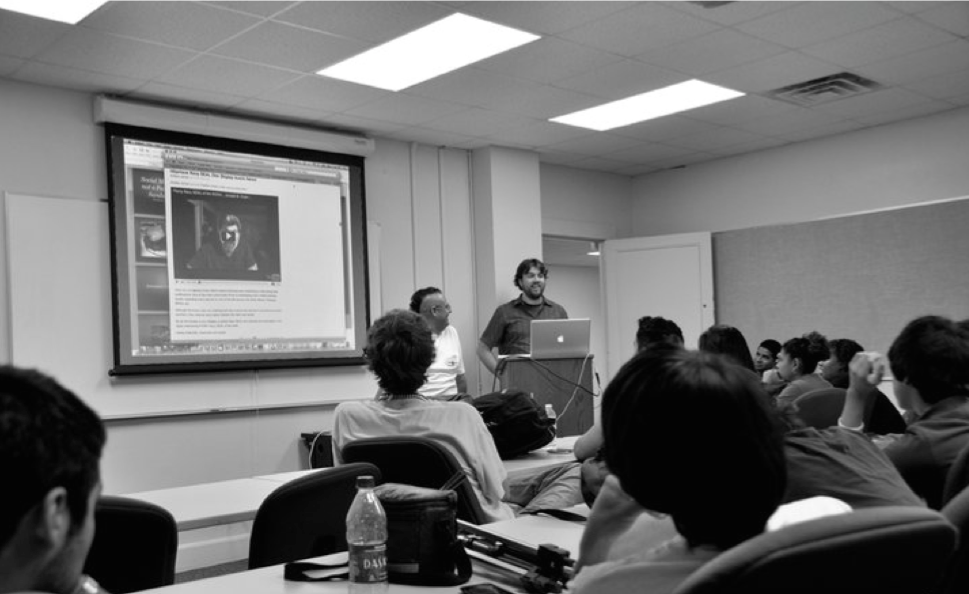
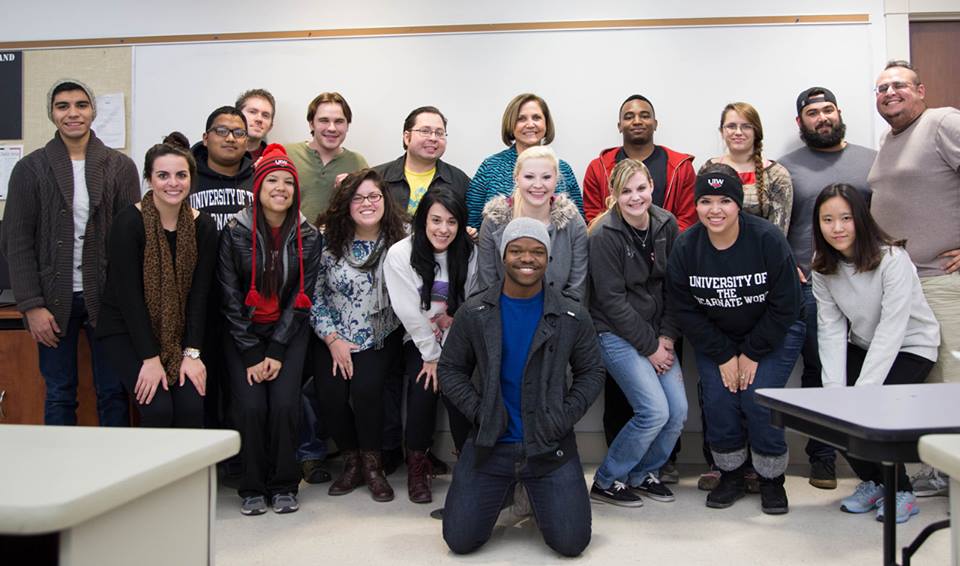
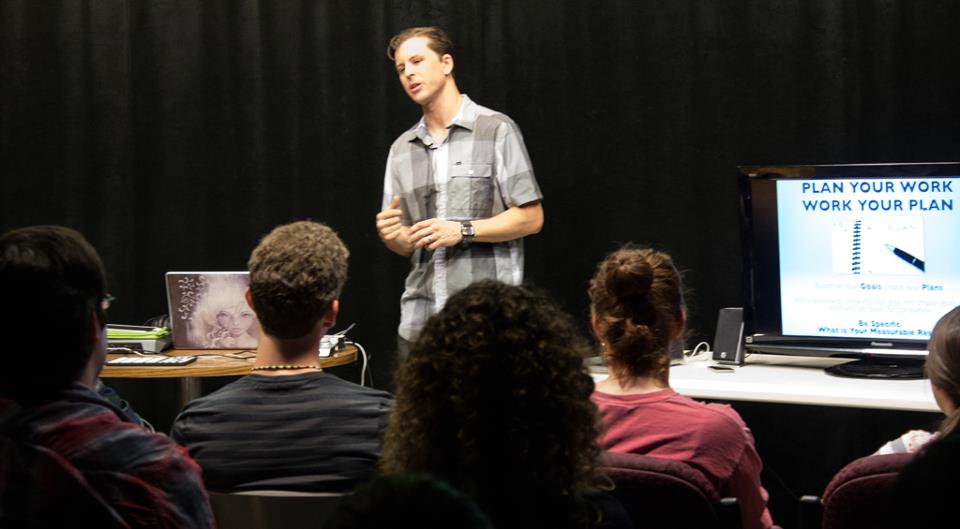
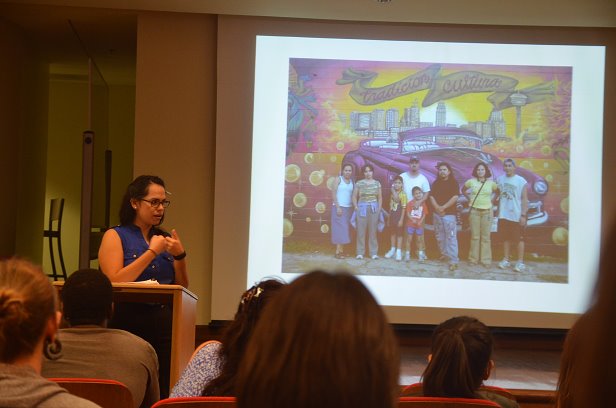
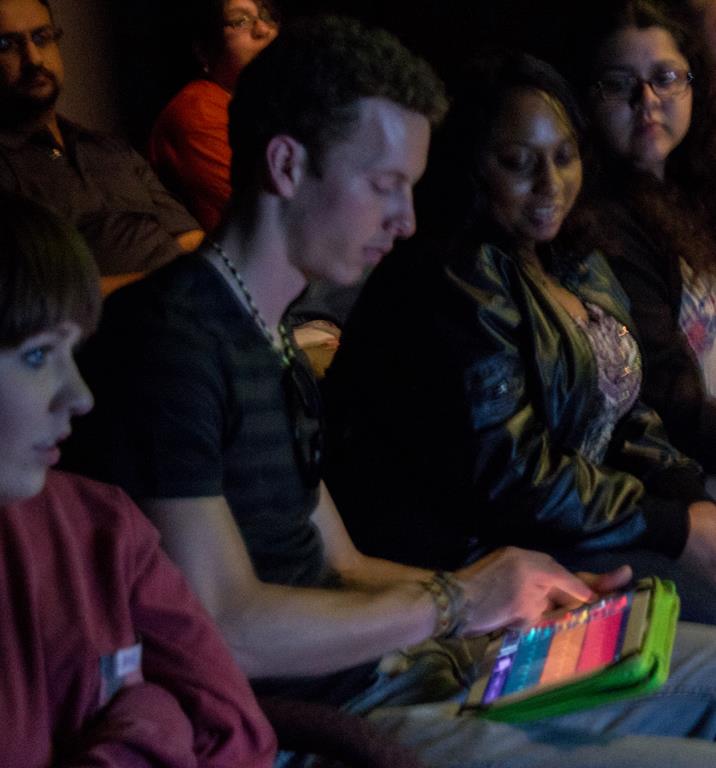
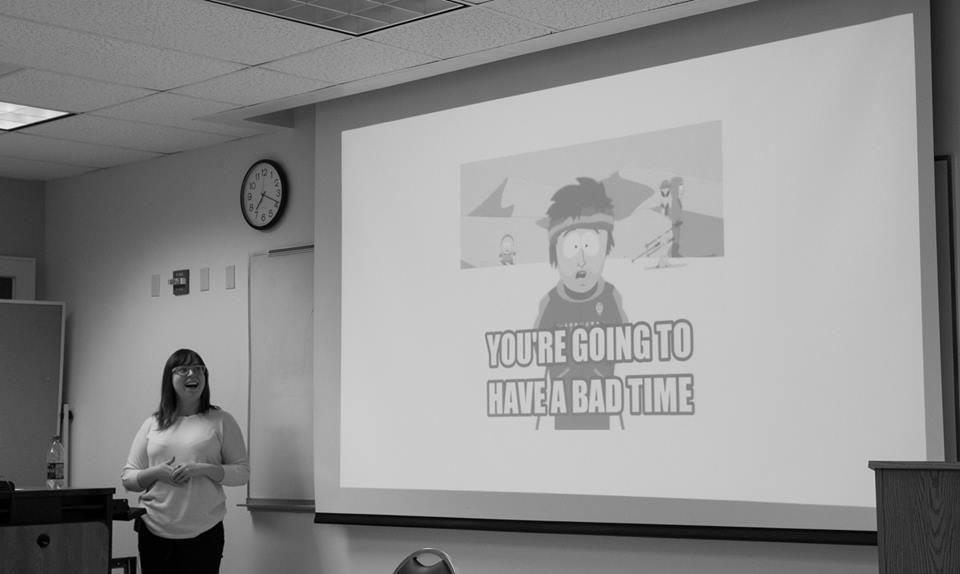
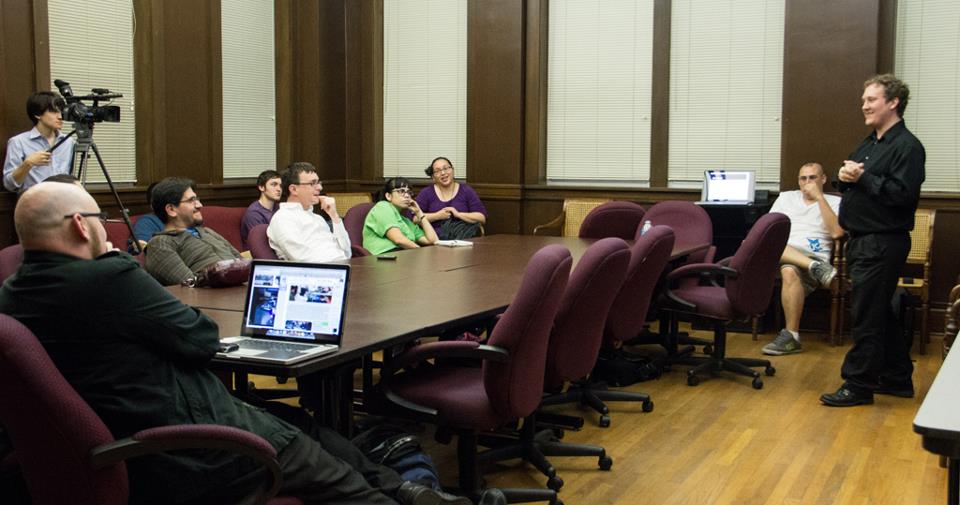
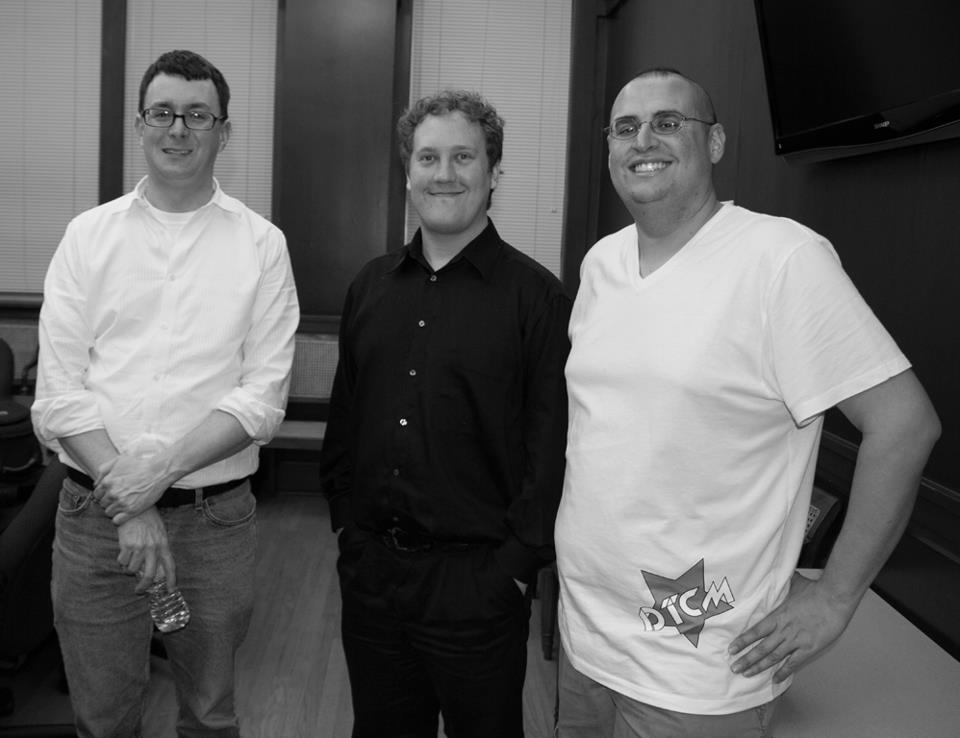
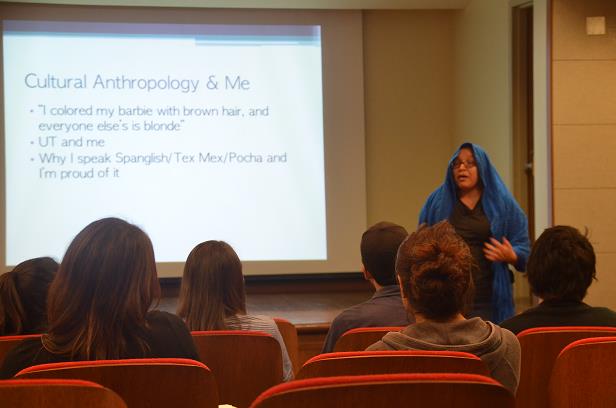
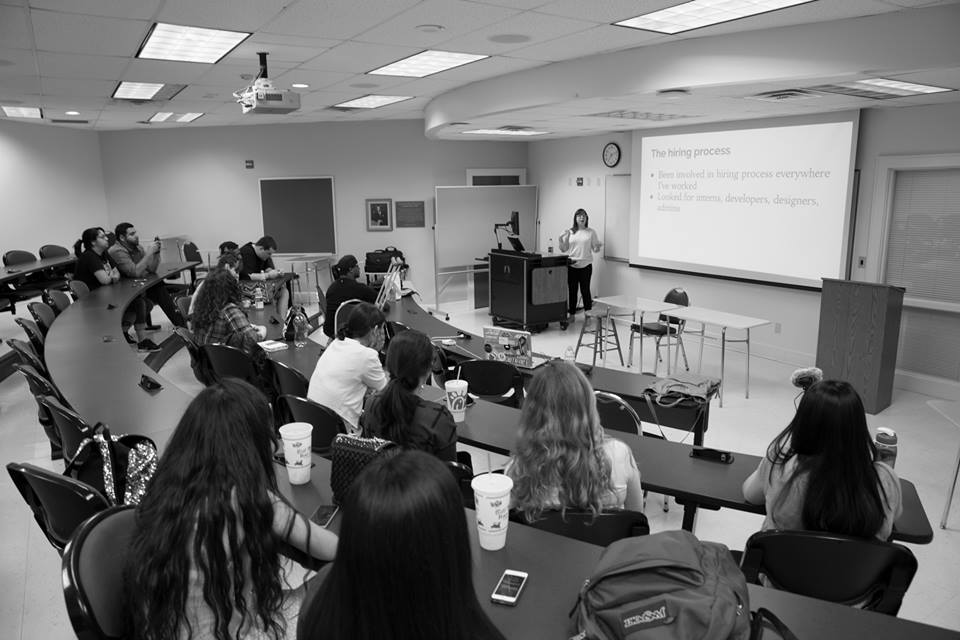
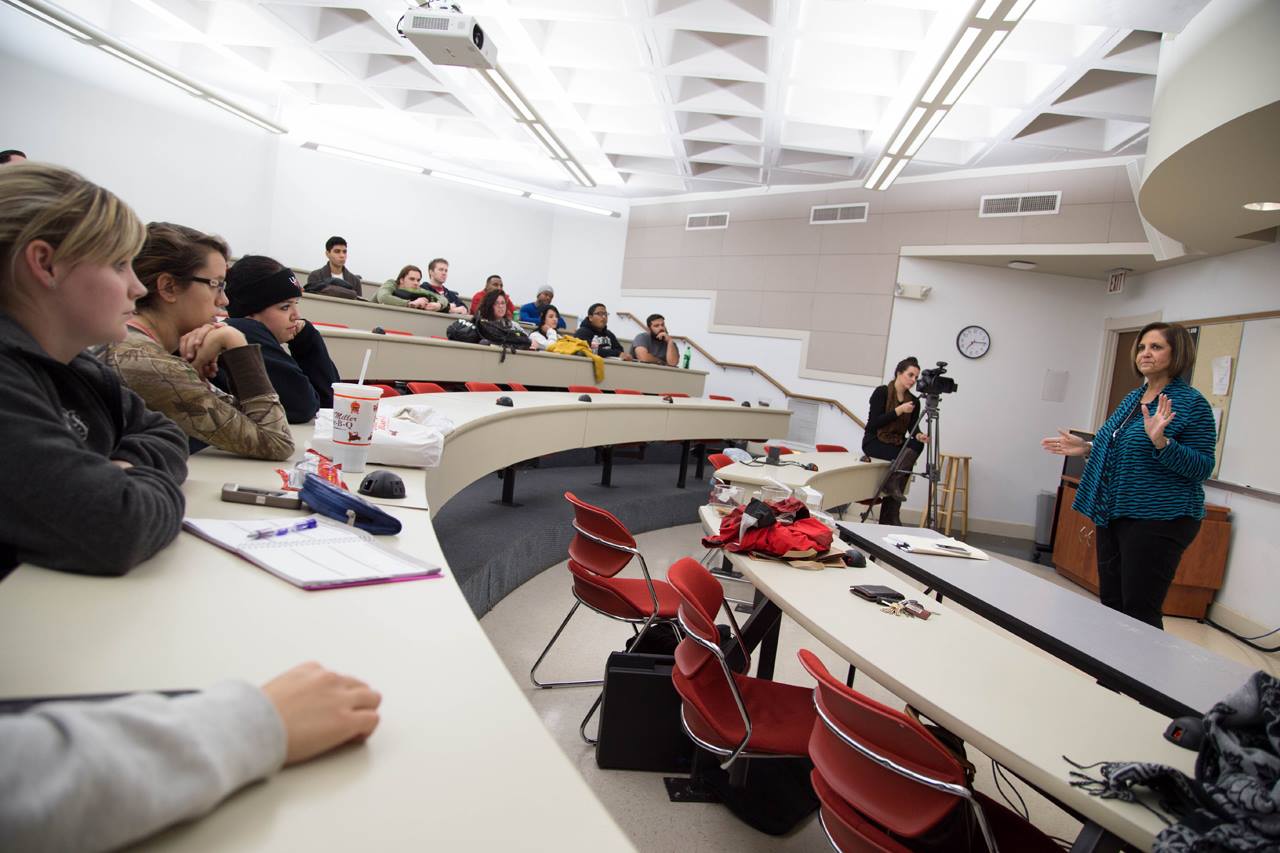
Transforming with the individual interests of its students, the Convergent Media group originated to facilitate these interests and to help students craft their projects and learn about new technologies which would help them in their production processes. Soon after its inception, Dr. Lopez began searching for ways to expand his students viewpoints on their various interests. With a lot of students emphasizing interests in production, he, along with the help of some of the most active members, established the Convergent Media Talk Series which brought professionals from various fields to the university to speak on their individual areas of expertise.
Outings and Trips
Random Art Piece create at Jim's in the Early Days of Convergent Media
Dinners and Outings
The group began organically, as students in Dr. Lopez’s classes began connecting with each other and expressing their individual ideas for various projects they were working on for his classes. During these interactions, a group formed and began to meet outside of school time, often over meals. Dr. Lopez would attend these meals and talk with his students about their projects, often giving valuable insight into the production and planning processes. The students would get a chance to converse with their peers and their professor in a causal-laid back environment, reminiscent of the dinners and lunches that were shared at Black Mountain College during its heyday. Dr. Lopez often emphasized the point that most learning takes place outside the classroom and only a minimal amount of experience can be gained by sitting in a rigid university setting.
With the university located down the street from a local diner, Joey often invited his students to go to dinner with him and his wife after class so they could discuss each others’ projects and just get to know each other in general. Building a community was a vital part of establishing Convergent Media as a successful program at UIW, and the social aspect of education was always emphasized as a way to bridge the gap between teacher and student and create a unique dialogical space where everyone could be at ease to speak their mind and comment openly about educational matters with their professor present.
This time also served to break down the barrier between teacher and student. Whereas most professors would be content to stay at the front of the classroom and not interact with their students outside of class hours, Joey made an effort to become a part of the community he was trying to form, regularly spending time with them outside of class helping with projects or teaching them the basics of their skills.
Outside Professional Development Trips
Convergent Media Students at Studio M
Part of getting his students engaged involved taking them to meet with industry professionals in their respective environments. During the Fall of 2010, the group went to several different locations to see exactly what working in a professional environment is like. One of the first trips involved going to local recording studio, Studio M on West Avenue in San Antonio. This trip gave the students an inside look into how a full-fledged recording studio operates. Having only been exposed to electronic recording processes on the computers in the Communication Arts Department, they were impressed to see how recording takes place in a major studio. This also served as an opportunity for industry professionals to see how the next generation of audio engineers think and the new direction many students are taking when producing music. One of the most talented Convergent Media students, Philip James, showed the studio director one of his electronic songs that he produced for an audio production class. The director, impressed by Philip’s production, later remarked about the new way people are making music, and debated with students about which way was better. After talking with students who produce their own musical compositions using such software as Ableton Live or Soundtrack Pro, he too left with an altered perspective about traditional vs modern production values.
Expanding Interests
As part of the Convergent Media philosophy, the group often took several trips to explore students’ unique areas of interests. These trips ranged from short outings downtown to explore other creative spaces and communities, to full expeditions to Austin or Goliad, TX.
Visiting the Texas Mile in 2010
One of the first Convergent Media trips involved a trip to the Texas Mile in Goliad, Texas. Spurred by the automotive interests of UIW Sophomore Aaron Garcia and enhanced by the shared passion exuded by Dr. Lopez for high-end automobiles, the two, along with myself, journeyed to the Mile to witness the fastest cars in Texas hitting the track and gain some valuable insight into the automotive realm. They also gained first-hand experience filming cars at high rates of speed utilizing the emergent DLSR video technology and attached GoPro cameras to record all aspects of the vehicle’s trip down the track. This also served as a valuable experience in automotive storytelling, allowing the students to document the behind-the-scenes interactions of drivers and crew.
This trip embodied the spirit of Convergent Media set forth by the example of the ACTLAB and spearheaded by the Black Mountain College philosophy. Empowering students to learn more about their interests serves to inspire them in their creative endeavors, whatever their method of production may be. This trip inspired Aaron and myself to research making our own automotive productions and attempt to film our vehicles, which inspired several future projects from the both of us.
Music Production
Christian Rios playing a DJ set at Club Space in San Antonio
Music played a large role throughout the inception and formation of the Convergent Media Collective and Student Organization. One of the first students to show an interest in creating electronic music was Christian Rios (Dreamonoid), who eventually went on to found the student organization with fellow member Johnny Guajardo. Dr. Lopez saw an avenue to expand his student's interest and ordered Ableton Live, so Christian might gain some experience producing music.
Phillip James debuting his first single, “Cake is Gone” at a party in December 2011.
Along with Christian, Phillip James, one of the original members of Convergent Media, became interested in electronic music production as well. Taking the name Swatdojo, he soon mastered the art of electronic music production and focused his talents in the genres of Dubstep and Electro House.
Rob Blount
A community Convergent Media member, Rob Blount, who goes by the pseudonym of BB3, also showed an interest in working onmusical compositions, and he and Christian collaborated on many songs after they met in Fall 2012.
Student-Led Convergence
Convergent Media’s 1st Student President, Christian Rios, demonstrates Ableton LIve to his peers
Housed in the administration building at the front of the historic San Antonio campus, Convergent Media at UIW recently began gaining momentum in the past two years due to the efforts of Dr. Joseph Lopez, better known to his students as Joey, who functions as the head of the program and the faculty facilitator of the newly-founded Convergent Media student organization. Placing an emphasis on the students, he directs his program towards the realization of their goals and utilizes a community attitude to help make their dreams into realities. His work with the students of UIW appears to have already made an impact on the small campus, as three generations of Convergent Media alumni now make waves in their community and utilize the skills they learned in his program.
In a recent interview with Christian Rios, the first president of UIW’s Convergent Media student organization, he described how all the program’s participants came together to work toward each other’s common goals. Outlining the loose structure that ties the students and faculty together, he stated that, “I think what happened was that we only started hanging out with people that were genuinely interested in Convergent Media and when you get people that are genuine, genuine things start to happen” (Rios).
However, despite their lack of structure, Convergent Media still exists as a fully functional university approved student organization, and as such, it requires a full constitution, a set of written bylaws, and a listed hierarchy of members. So, although they still maintain an informal inner presence, they present an outer front with an established hierarchy of members. When questioned about his former position as president, Rios stated that, “as president, I basically made it a point to take a back seat. I was very adamant about what I wanted to do, but in no way did I tell people that they had to do what I wanted to do” (Rios). Operating under a facade of conformity, Convergent Media works informally under the radar of the university and receives all the benefits of being an officially registered student organization.
Convergent Media students working in the Convergent Media office
In their recently published book, Invent to Learn: Making, Tinkering, and Engineering in the Classroom, Sylvia Martinez and Gary Stager describe the act of “making” as “a powerful, personal expression of intellect. It creates ownership even when what you make isn’t perfect” (33). This foundation of “making stuff” that lies at the cornerstone of Convergent Media inspires its students every day. From learning how to DJ an event, to mastering the skills necessary for video and audio production, to developing an interest in running for public office, the students of Convergent Media constantly find inspiration to try new things and to use their prior knowledge, along with the available technology, to learn a new process and make it better.
The Former ACTLAB @ UT Austin
Founded in 1993, the former ACTLAB at the University of Texas at Austin served as a catalyst for innovations, advancements, and the exploration of many emergent technologies. Utilizing pedagogical methods similar to that of Black Mountain College, the ACTLAB strove to include dialogical conversation and open creative expression at its core. Students learned through a mixture of project-based learning and theoretical exploration of ideas. They were encouraged to make projects that were new and innovative and stood outside the realm of the norm and, with the guidance and instruction of Professor Emiritus Sandy Stone, they succeeded in accomplishing just that.
Pedagogical Philosophy
ACTLAB Students 2007
Founded in 1993 by American academic theorist and trans-gender activist, Sandy Stone, the ACTLAB at the University of Texas at Austin existed within the Radio, Television, and Film Department. Exuding a multi-modal mindset, the ACTLAB, which lasted from 1993-2010 at UT Austin, sought to foster creativity, innovation, and collaboration to create a unique environment capable of inspiring students to create their own unique projects.
ACTLAB Presentation 2009
Make Stuff. Take Risks. Be Awesome.
The ACTLAB operated under their uniquely simple motto, “Make Stuff. Take Risks. Be Awesome.” On their website, they emphasize the meaning of these three concepts which remain an essential part of the lab.:
Make Stuff: Similar to the emergent “maker movement’ which places an emphasis on doing rather than simply researching, this part of the mantra believes that, “human culture arises from the essential act of making.”
Take Risks: Contrary to its most literal connotation, this part of their motto states the importance of trying new things and leaving behind any fears or predispositions about utilizing new technologies to create something meaningful. In their own words, it means, “learning to welcome the unexpected and to create circumstances in which you can be surprised by your own work.”
3. Be Awesome: This refers to the act of possessing a unique confidence about your work and not being afraid to display, present, or promote it in outside environments because of fear, critique, or judgment. Rather, it welcomes these as just another opportunity for your idea to grow and develop further. In the ACTLAB, “Being Awesome,” isn’t just a casual statement, it existed at the core of the program, and was emphasized in every class, meeting, and conversation.
ACTLAB Presentation 2009
Develop, Learn, Become, Share
The ACTLAB sought to see its students grow into scholars who understood both the theory behind their projects, as well as the importance in actually making their ideas come to life. This developed into a four-pronged perspective embodied in the words, “Develop, Learn, Become, Share.”
Develop: The ACTLAB encouraged students to develop multiple sets of technological skills, so they might have a more well-rounded view of creation and the “making” process. This also provides them with skills which they can utilize later on when working on more complex projects after they graduate. By learning to utilize various technological means, they become increasingly more valuable in today’s ever-changing technological landscape.
Learn: The official ACTLAB site defines this as learning “by study and example to translate their research into advanced media, emergent technology, sound, movement, performance, and other dynamic modes of representation.” Basically, it comes down to not being afraid to ask for help when needed and seeking out others with experience in an unfamiliar avenue. This fearlessness to seek help emerged as an essential aspect of both the ACTLAB and the Convergent Media program at UIW.
Become: This tenet encourages students to take their work to the next level to become a member of the ACTLAB’s larger community of “award-winning researchers, entrepreneurs, performers, artists, and scholars.” It emphasized that each student possesses an unrivaled potential and can go as far as they choose to go. For students of the ACTLAB, working on their projects wasn’t simply about receiving an “A” or passing a class, instead, it was about transcending the university itself and creating innovations with a truly meaningful purpose.
Share: After creating their projects, conducting their research, or learning a new technology, students were encouraged to share their findings with other members of the community so as to further the intellectual advancement of not just that particular group, but of the entire collective so that others might perpetuate their findings and take them in new directions unforeseen by the original creator.
Sandy Stone, Founder
Sandy Stone (2009)
Originally haling from New Jersey, Sandy Stone was born male and undertook a gender-change operation later in 1974. She became a notable recording engineer in the late 1960s and recorded legendary guitarist, Jimi Hendrix. She earned her B.A. a St. John’s College in Annapolis, Maryland in 1965 and later earned her Ph.D. from The University of California, Santa Cruz.
Allucquére Rosanne “Sandy” Stone, founded the ACTLAB in 1993 when she was hired at the University of Texas at Austin. A visionary theorist, author, and transgender activist, she created the ACTLAB with the intention of providing a place where students could grow in interdisciplinary practices and in a supportive community of creators seeking the advancement of new technologies and innovations.
The Lab had a rocky tenure at the University of Texas, due to multiple conflicts with the more-conservative administration within the university who sought to supress and minimalize their work. The university would eventually even go to the extreme of not admitting the existence of the ACTLAB and would attempt to shut it down on several occasions until Sandy’s “retirement” from the university in 2010. She now teaches as a professor emeritus at the University of California Santa Cruz.
Places & Spaces
One of the most important parts of fostering a creative community is the space in which that community can grow and where members are free to expand their interests with their peers. This space must exist outside of the realm of traditional classrooms and should feature enough space and a minimum amount of tools necessary to generate production work. The ACTLAB was housed out of a custom, multi-modal studio facility designed to house the creative interests of such a diverse group of students and their innovative faculty members.
ACTLAB Studio Space with Roundtable Discussion Area (2011)
Converted from a former television studio space in the RTF Department at UT Austin, the ACTLAB studio featured wide-open spaces, multiple Macintosh and Windows based computers, two sofas, Wi-Fi access and numerous outlets, as well as appropriate lighting designed to create a unique comfort level for its students. Also featuring a large, removable, sturdy table at its center, the studio space also served as an appropriate location for theoretical discussion, presentations, and dialogical communications between both faculty and students.
ACTLAB Multi-modal Student Art Presentation (2009)
The overall goal of this space was to create a facility in which its students could feel comfortable communicating with peers and faculty and work on their often multi-modal projects which required a space large enough to house full-scale physical productions and demonstrations. The idea was that the space should be large enough to accommodate students’ creative interests and should be an area where they wouldn’t feel constrained by physical limitations.
Notable Projects
ACTLAB TV
Before the mainstream advent of streaming online video, the ACTLAB sought to create an online space for streaming video in relation to their activities within the department. This project, referred to as ACTLAB TV, was undertaken by Brandon Wiley and Joseph Lopez during their time in the lab. Their goal was to stream independent films and television shows from all over the world, to bring publicity to smaller productions which don’t have the funding or notoriety to be shown on cable television.
MOBILE PROJECTION MAPPING
The ACTLAB students were some of the early pioneers of mobile projecting, often called “Projection Bombing.” This was an experiment in transcending the boundaries of traditional advertising beyond our own realities. It delved into theories about trespassing and reexamined the notion of being present in a current space.
ACTLAB REUNION 2014
Closing Thoughts on Pedagogies
Dr. Lopez gives a talk about running the Convergent Media program
Education and Recreation in the Post-Information Age
As beings living in the post-information age, we must rethink everything…especially education. With knowledge and information readily available at the push of a button, our newest innovations now make it nearly impossible to keep working within our current pedagogies. Describing the new challenges and opportunities that have emerged in recent years, Nicholas Negroponte states in his book Being Digital, that “In the post- information age, we often have an audience the size of one. Everything is made to order, and information is extremely personalized” (164). With this personalization comes the realization that students who came of age in the era of personalization, need to be taught in a more personal and engaging way. What Paulo Friere describes as the “Banking Model of Education” in his book, Pedagogy of the Oppressed will simply not work anymore (76). A professor can no longer stand at the front of a classroom and deliver a lecture to his students and expect to hold their attention throughout the entirety of the class. Instead, he or she must actively reach out and engage the students through constructive dialogue and through the implementation of a “problem-posing education, which breaks with the vertical patterns characteristic of banking education” (Friere 80). As Friere claims, “The teacher is no longer merely the-one-who-teaches, but one who is himself being taught in dialogue with the students, who in turn while being taught also teach” (Friere 80).
Often referred to as the “Net Generation,” those who have grown up surrounded by technology need a new outlet for their educational exploration as they try to extend their own knowledge and link what they learn both inside and outside the classroom. In his book Educating the Net Generation, Bob Pletka, Ed.D., says, “Because the Net Generation has been shaped by a communication and information-rich environment, youths expect environments that enable them to collaborate with others in their own community and with a larger global network” (18). This collaboration and constant need for dialogue with others makes the Net Generation a natural fit for the Post-Information Age they inhabit, in which answers and connections are readily at their disposal.
Unlike traditionally structured collegiate organizations, Convergent Media claims to possess an unparalleled level of collaboration between its members with no particular leadership hierarchy in place. Instead students can choose to head their own projects and events with help readily available from the group at every turn. Serving as the moderator for Convergent Media, Dr. Lopez tries to stay out of the way so his students are free to think for themselves. At meetings, he maintains a watchful presence towards the back of the room while his students lead the discussions, plan the events, and welcome new members into the organization. Although many other student organizations claim to be student-run, Convergent Media is perhaps the most participatory on the campus. Every member must give some input. Anything from choosing where to go to dinner after the meeting to what sort of intermodal art installation to include in the Institute of Texan Cultures’ next exhibit is considered important and must be decided by the individuals heading the projects.
Although some may view the Net Generation merely as unorganized underachievers, perpetually fascinated with the latest gadget on the market and the drama of updating their Twitter feed, they truly possess the power to change our world. In the book Born Digital, John Palfrey and Urs Gasser describe how this generation stands poised to change the status quo. They state that, “As more Digital Natives come of age, we will see innovations in productivity, consumer-driven innovation, and new platforms for creativity that we can’t foresee today” (236).
However, before changing the world, the “Digital Natives” must first be educated. Palfrey and Gasser claim that, ““Digital Natives gather information through a multistep process that involves grazing, a “deep dive,” and a feedback loop”” (241). They skim through hundreds of news articles and information pieces per day, choose a topic, dive into it and eventually, actively engage the subject if it interests them (241-243). Convergent Media at UIW maintains that if this model of education already exists in the mindsets of these “Digital Natives,” why not adapt our model to theirs instead of forcing students to learn using a foreign way of thinking.
The notion of work and play must also be rethought if one wishes to thoroughly understand today’s students. In The Rise of the Creative Class: And How It’s Transforming Work, Leisure, Community and Everyday Life, Richard Florida seems to grasp how this new generation views leisure and entertainment. “Leisure is undertaken not for its own sake but to enhance the creative experience—which for the Creative Class, is work” (163). Constantly on the move, today’s students possess an unprecedented desire to keep moving and never slow down, whether at work or at play.
Bibliography
Works Cited
Archer, Hazel Larsen. Hazel Larsen Archer: Black Mountain College Photographer. Asheville, NC: Black Mountain College Museum + Arts Center, 2006. Print.
Dawson, Fielding. The Black Mountain Book. New York: Croton, 1970. Print.
Duberman, Martin B. Black Mountain; an Exploration in Community,. New York: Dutton, 1972. Print.
Ellert, JoAAnn C. The Bauhaus And Black Mountain College. n.p.: Journal of General Education, 1972. ERIC. Web. 24 Apr. 2014.
Florida, Richard L. The Rise of the Creative Class: And How It’s Transforming Work, Leisure, Community and Everyday Life. New York, NY: Basic, 2002. Print.
Freire, Paulo. Pedagogy of the City. New York: Continuum, 1993. Print.
Freire, Paulo. Pedagogy of the Oppressed. New York: Continuum, 2000. Print.
Fussi, Karl Heinz. “Pestalozzi in Dewey’s Realm? Bauhaus Master Josef Albers Among The German-Speaking Emigres’ Colony At Black Mountain College (1933-1949).” Paedagogica Historica: International Journal Of The History Of Education 42. 1-2 (2006): 77-92. ERIC. Web. 24 Apr. 2014.
Katz, Vincent, and Martin Brody. Black Mountain College: Experiment in Art. Cambridge, MA: MIT, 2003. Print.
Martinez, Sylvia Libow., and Gary Stager. Invent to Learn: Making, Tinkering, and Engineering in the Classroom. Torrance, CA: Constructing Modern Knowledge, 2013. Print.
Negroponte, Nicholas. Being Digital. New York: Vintage, 1996. Print.
Palfrey, John G., and Urs Gasser. Born Digital: Understanding the First Generation of Digital Natives. New York: Basic, 2008. Print.
Pletka, Bob. Educating the Net Generation: How to Engage Students in the 21st Century. Santa Monica, CA: Santa Monica, 2007. Print.
Reynolds, Katherine Chaddock. The Influence Of John Dewey On Experimental College: The Black Mountain Example. n.p.:1995. ERIC. Web. 24 Apr. 2014.
Reynolds, Katherine Chaddock. Visions and Vanities: John Andrew Rice of Black Mountain College. Baton Rouge: Louisiana State UP, 1998. Print.
Rice, John Andrew. I Came out of the Eighteenth Century. New York: Harper & Brothers, 1942. Print.
Rios, Christian P. “Interview with Christian Rios, the First Convergent Media President.” Personal interview. 14 July 2013.
Rumaker, Michael. Black Mountain Days. Asheville, NC: Black Mountain, 2003. Print.
Works Consulted
Fully Awake: Black Mountain College. Dir. Cathryn Davis Zommer and Neeley House. Perf. John Cage, Buckminster Fuller. Documentary Educational Resources, 2007. DVD.
Hager, Paul J., and John Halliday. Recovering Informal Learning: Wisdom, Judgement and Community. Dordrecht: Springer, 2006. Print.
Illich, Ivan. Deschooling Society. New York: Harper & Row, 1971. Print.
Lopez, Joseph T., Ph.D. “Transformative Intellectuals: Teaching Oppositional Practices in Academia.” Diss. University of Texas at Austin, n.d. Web. 18 June 2013.
Stein, Joel. “The New Greatest Generation: Why Millenials Will Save Us All.” Time Magazine. 20 May 2013: 26-34. Print.
Vygotskiĭ, L. S., and Michael Cole. Mind in Society: The Development of Higher Psychological Processes. Cambridge: Harvard UP, 1978. Print.
Dedication
This website and capstone project is dedicated to the memory of Cameron Redus, who was tragically shot outside his off-campus apartment by an off-duty UIW campus police officer on the morning of December 6th, 2014. Cameron was truly a model Convergent Media student. He lived life to the fullest and always strove to help others in the process.
Whenever he witnessed a student who needed help on a project or grasping a concept, he was always there to lend a hand. To Cameron, going to college wasn’t simply about getting A’s in all his classes (although he did consistently make the Dean’s list and was Valedictorian of his high school class). To Cameron, attending UIW revolved around the impact he could have on others. He volunteered his time at the Assistance League, worked at Sherwin-Williams, and dreamed to one day start his own media production company and travel the world.
His dreams and ambitions are the embodiment of what Convergent Media is all about, and I am grateful to have known him during his time at in the program. He was a great friend and an ardent scholar. His loss affected the whole campus, and UIW will never be the same. However, if we keep his memory alive and live with the same passion that he exuded, his legacy will survive in each of us.








